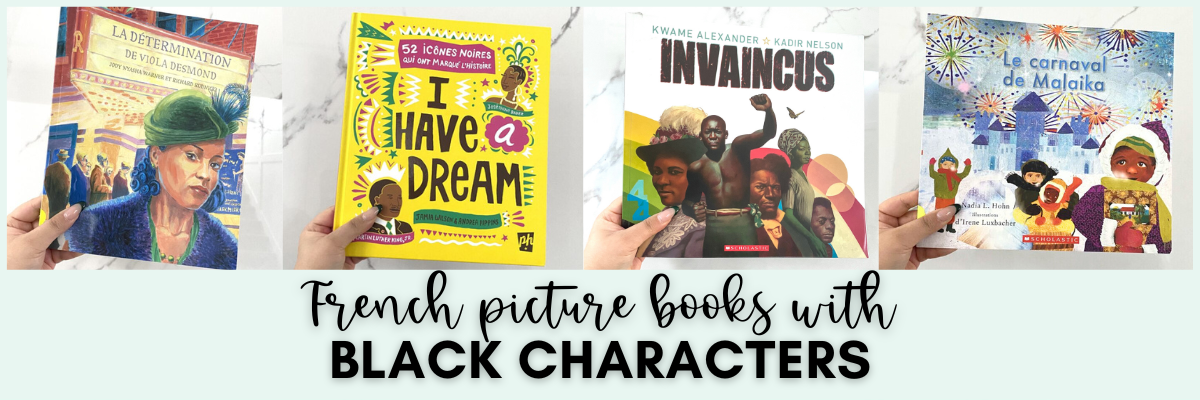
Whether you teach Core French or French Immersion, French picture books are an indispensable teaching tool. Today I am sharing my favourite French picture books with Black characters. Notably, whether you are looking for French picture books with Black characters for Black History Month or for any other month, I’ve got a wide variety of options for you in this post.
Moreover, in 2020, many French teachers committed to diversifying their bookshelves. Consequently, teachers unpacked the role that diverse picture books play in providing mirrors and windows, and eventually becoming sliding glass doors, for all of our students. This blog post is the second in a series where I share my favourite French picture books with characters with diverse identities. The first blog post featured French picture books with Muslim and/or Arab characters.
Additionally, if you find this blog post as you are preparing your French Black History Month lesson plans, please note that I have an entire blog post dedicated to resources for Black History Month.
Why should you have French picture books with Black characters in your classroom library?
Half of English picture books published in 2015 featured non-human characters. However, the number of English picture books written by Black authors has increased since 2015. Noticeably, there was a noticeable increase following the Black Lives Matter movement’s remergence in 2020. Nevertheless, there are no similar studies on French picture books with Black characters. What we do know is that many of the French picture books in the market are French translations of American books.
Why do we need to have French picture books with Black characters in our classroom libraries?
Black children need to see themselves represented. When students spend six hours a day in classrooms learning, representation within the context of education is essential. Furthermore, non-Black students must also see read about Black characters in picture books.
Anti-Black racism did not end in 2020, folks. It is alive and well.
Moreover, our non-Black students need to learn about the history and presence of anti-Black racism. They need to play an active role in unlearning stereotypes and biases. Non-Black students also need to read stories where Black characters experience joy and successful.
Who writes the stories? #ownvoice
I am a South Asian woman who was born and raised in Canada. I never got to read stories about my culture written by people who looked like me until I was in my twenties.
This has got to change!
On my platforms, I choose to share books written by #ownvoices. If you are interested in learning more about own voices, please do read this important blog post by Little Feminist explaining what it is and why it’s important.
Wherever possible, I have tried to share French books written by Black people. There are a few unique cases where I have decided to include a book written by a non-Black author.
Where should you purchase these French picture books with Black characters from?
I recommend purchasing these French picture books from your local independent bookstores.
Invaincus par Kwame Alexander, illustrations de Kadir Nelson
Invaincus is a powerful hommage to all Black trailblazers who fought for freedom and justice.
This book is about a long history of resistance and resilience.
There are so many things I love about this book – the powerful illustrations and the poetic way in which Kwame Alexander writes.
Kwame Alexander writes in a way where he allows the pictures to speak for themselves. It is a powerful way of storytelling as it allows you the teacher to lead an age-appropriate discussion. I
Final opinion: this book should be in every classroom library in Canada and the US. We cannot move forward without knowing where we come from and where we are today.
Themes: pionniers noirs, résistance, résilience
French level: mid-novice. Lots of present tense, some past tense, and tons of French adjectives.
About the book: A French translation of an English original

Nos boucles au naturel – Matthew A. Cherry, les illustrations de Vashti Harrison
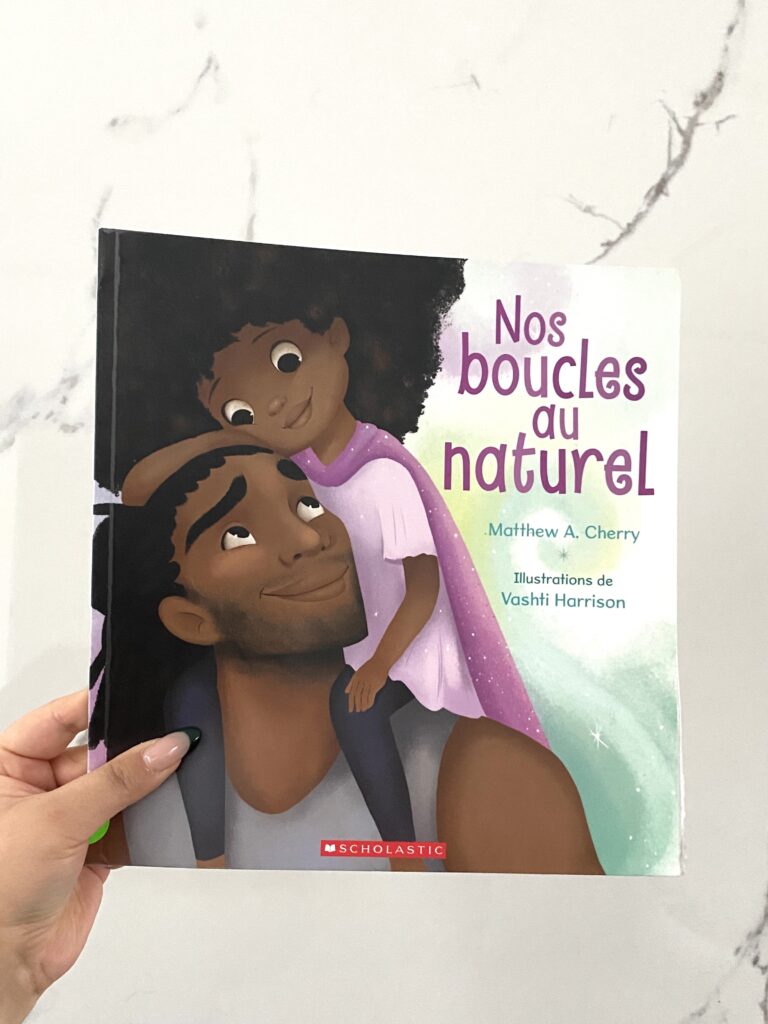
In Nos boucles au naturel, we meet Zuri who is so proud of her beautiful hair.
Zuri wakes on a special morning and enlists her dad’s help to do her hair. Her dad attempts to help her with her hair. However, his initial efforts failed despite his best efforts.
This book belongs in every classroom and school. At a time when Black hair is still so stigmatized, Black children deserve to see themselves represented in a story that celebrates a unique aspect of their appearance and their identity – their hair.
This book is equally important for non-Black people to read for so many reasons!
Themes: identité, famille, apparences physiques, fierté
French level: intermediate. There’s quite a bit of passé composé and imparfait.
About the book: a French translation of an English original
Le carnaval de Malaika par Nadia L. Hohn et les illustrations d’Irene Luxbacher
Le Carnaval de Malaika is a picture book that will give you all the feels.
This is a story of a little girl who lives in the French Caribbean. Her mom marries a Québecois man and Malaika and her family must move to Canada.
Malaika is incredibly heartbroken about having to leave her beautiful home, her community, and especially her loving grandmother.
When Malaika reaches Quebec, she has a difficult time adjusting to her new home and she misses her grandmother dearly!
Themes: choc culturel, immigration, famille
French level: intermediate (all in present tense)
About the book: A French original
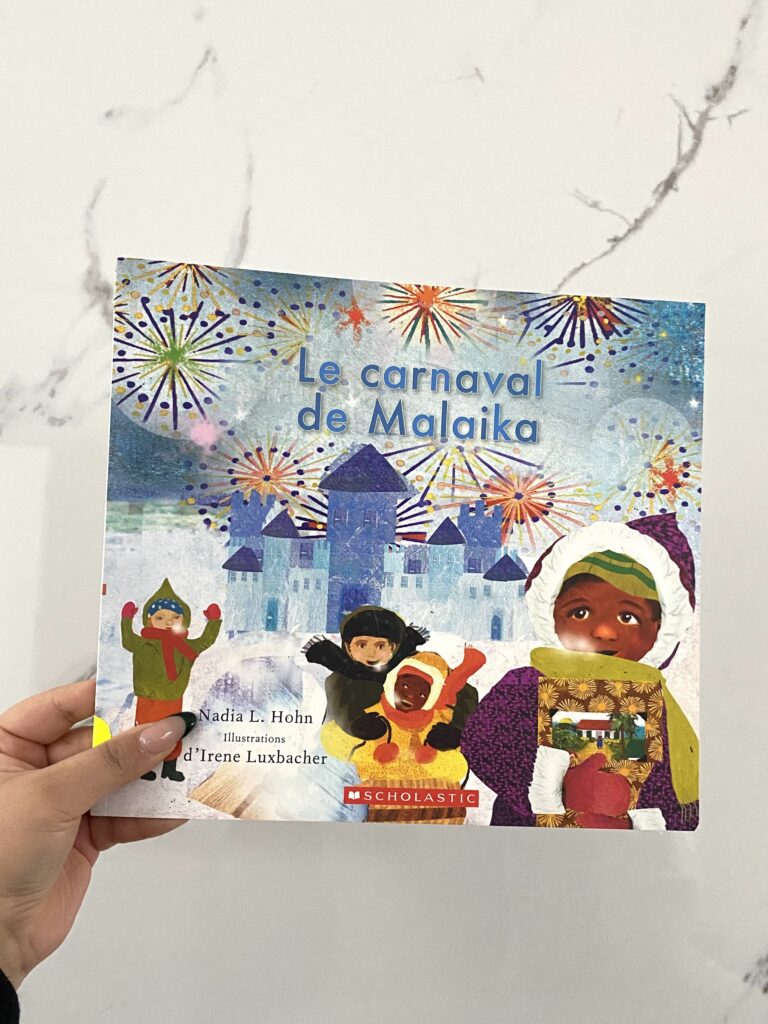
I Have a Dream – 52 icônes noires qui ont marqué l’histoire – Jamia Wilson et Andrea Pippins
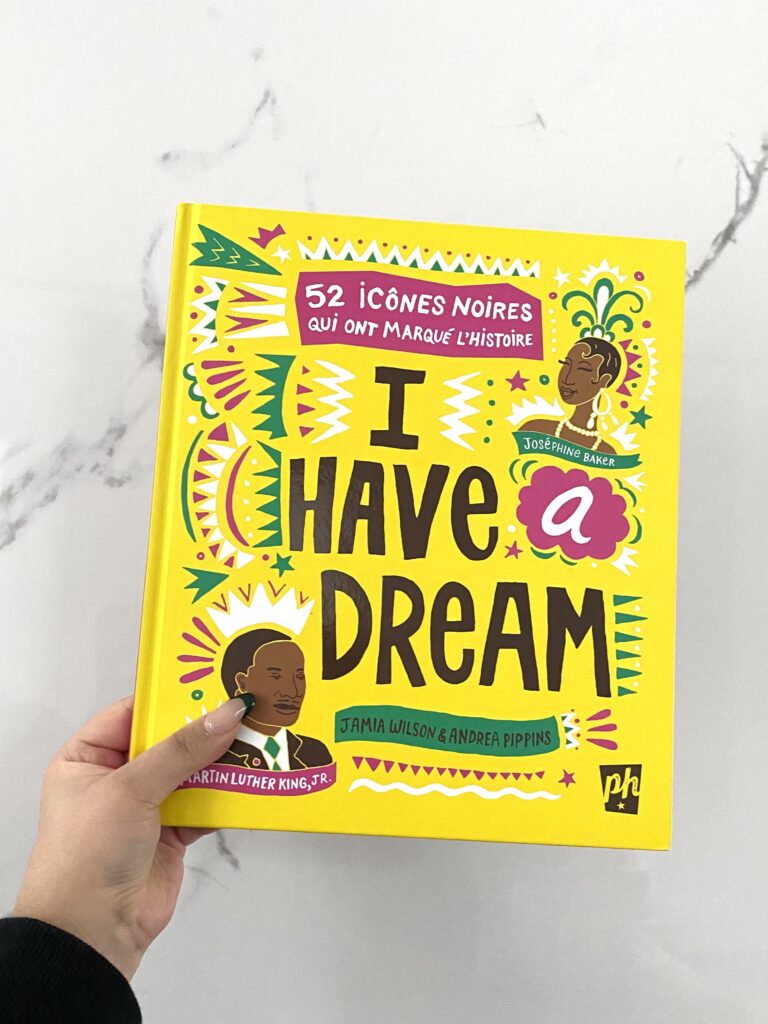
This is an excellent French book for kids, especially for French Black History Month lessons and activities (le mois de l’histoire des noirs). It contains beautiful illustrations and empowering descriptions of the lives and contributions of 52 Black icons all around the world.
So many of these types of books focus solely on the contributions of Black Americans. Canadians are typically more exposed to American stories, so it’s fantastic that this book has an international focus. It reinforces that Black history pertains to ALL of us everywhere in the world.
Examples of a few Black icons included in the book: Malorie Blackman (UK), Josephine Baker (US/France), Kofi Annan (Ghana), Nelson Mandela (South Africa)
A few ways to use I have a dream with your students:
- assign a different icon to each student in your class. Students can research and present their icon to the class
- as a class, study a different icon every day
Themes: pionniers noirs / pionnières noires, le mois de l’histoire des Noirs
French level: advanced French. We learn about the history of each character as well as how their story connects to the historical context of the time.
About the book: French translation of an English original
La détermination de Viola Desmond par Jody Nyasha Warner et Richard Rudnicki
If you are Canadian, you are likely familiar with Viola Desmond’s story.
This book is re-tells the story of Viola Desmond.
Viola Desmond was a Black Canadian trailblazer. She resisted racial segregation in Nova Scotia in the 1940s. Desmond was arrested in the 1940s for refusing to leave a whites-only area of a movie theatre.
Desmond’s courage paved the way for the end of segregation in the province.
Many Canadians falsely believe that there isn’t a history of segregation and anti-Black racism in Canada. It is only recently that Canadians have become familiar with Viola’s story.
Viola Desmond’s story is a vital part of Canadian history.
La détermination de Viola Desmond recounts the story of what happened that night when Viola resisted.
Themes: ségregation, injustices, droits civils au Canada, pionnionère noire
French level: high intermediate-advanced French (mix of tenses, some simple structures, some complex structures)
About the book: English translation of a French book
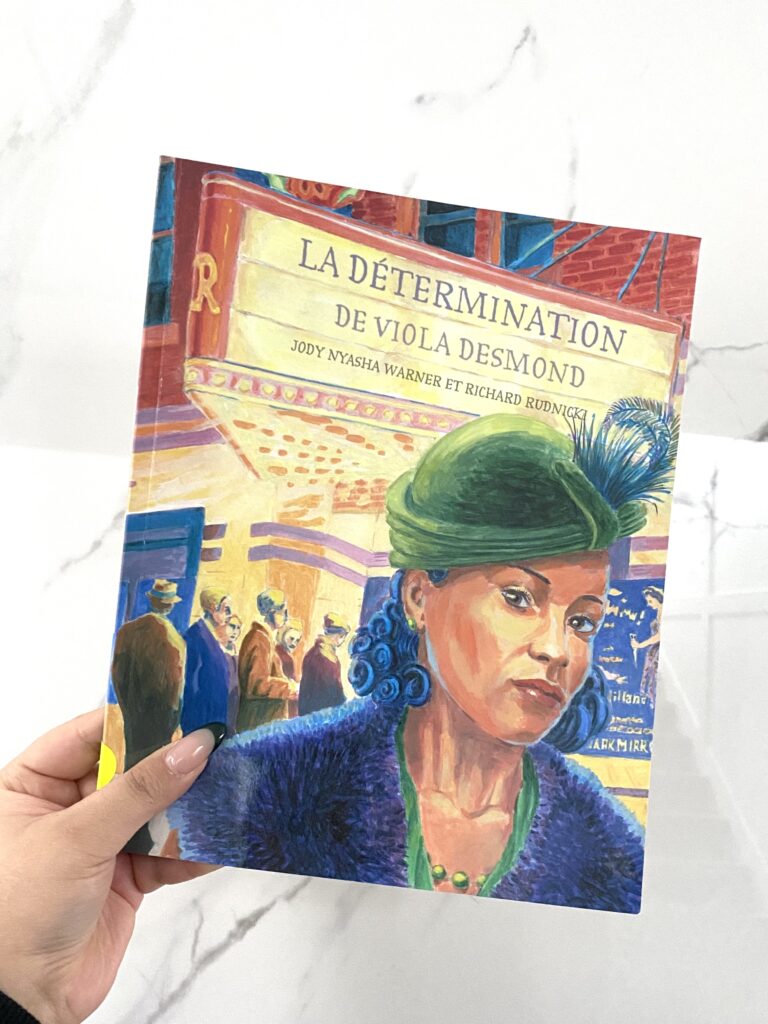
La princesse de l’eau claire – Susan Verde, illustrations de Peter H. Reynolds
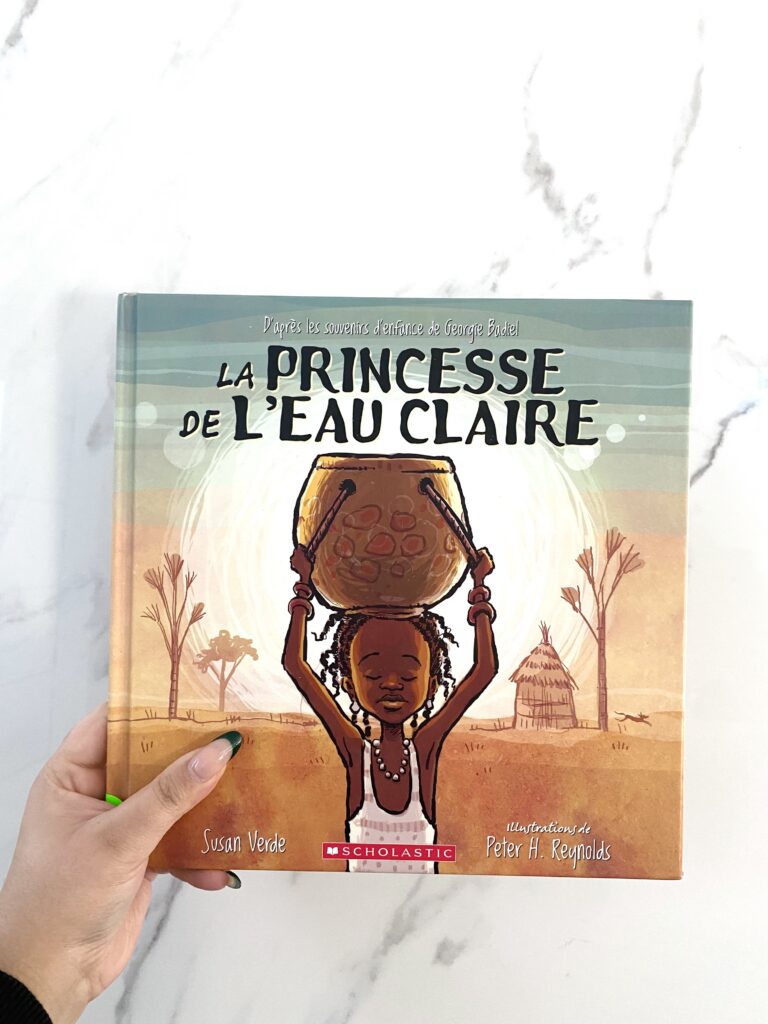
La princess de l’eau claire is based off of the true story of Georgie Badiel. Georgie Badiel is an African model from Burkina Faso who spent much of her childhood walking many kilometers daily to access freshwater.
This story was inspired by Georgie’s determination to find a solution so that families did not have to walk long distances to access water. Georgie also wanted to find a solution that would ensure that the freshwater was clean to drink.
La princess de l’eau claire is an inspiring story of a little girl who dreams to one day put an end to this water crisis that affects the residents of Burkina Faso.
Themes: la détermination, trouver des solutions
French level: mid-novice French (repetition of irregular French verbs pouvoir, vouloir, faire in present tense as well as ER verbs). On the last
About this book: French translation of an English original
Joséphine – Joséphine Baker, la danse, la Résistance et les enfants par Patricia Hruby Powell, illustrations de Christian Robinson
Joséphine is a 99-page book about the life of Joséphine Baker.
Baker was a renowned Black American entertainer who defied racial barriers in 20th-century France & the United States. Celebrated for her captivating performances and iconic banana skirt dance, Baker used her fame to aid the French Resistance during WWII.
She also fought against segregation in the United States. Baker became the first Black woman to be inducted in the Panthéon in 2021.
The book is divided into different periods in Baker’s life. We begin with her childhood and end with her death.
If you teach French Immersion (Grades 6+) or older Core French (Grades 10+), I recommend reading a section of her life at a time and then spending time learning about the historical events discussed in that section. You will also need to break down new vocabulary for your students.
**** The French version of the N-word (the word from which the English N-word is derived) has been used multiple times. On p.31, it is used within the context of the violence the KKK was committing towards Black people. On pages 54, 56, and 58 the word appears once more. This time it is the name of a French magazine. On p.71, the word describes a genre that Josphine sang in Austria. On p.78, Josephine is called the feminine version of that word by American media. It appears twice on this page.
My final opinion: This is the first book I’ve read about Josephine’s life and accomplishments and I enjoyed the read.
I loved learning about the history of the 20th century through the lens of Joséphine’s life. It was also interesting to see the difference in treatment that Josephine received in France vs. in the United States.
Themes: le racisme envers les personnes noires, la ségregation aux États-Unis, les genres musicaux, Deuxième Guerre Mondiale, la Résistance, la danse, la musique
French level: advanced. It has some extremely challenging vocabulary and sentence structures.
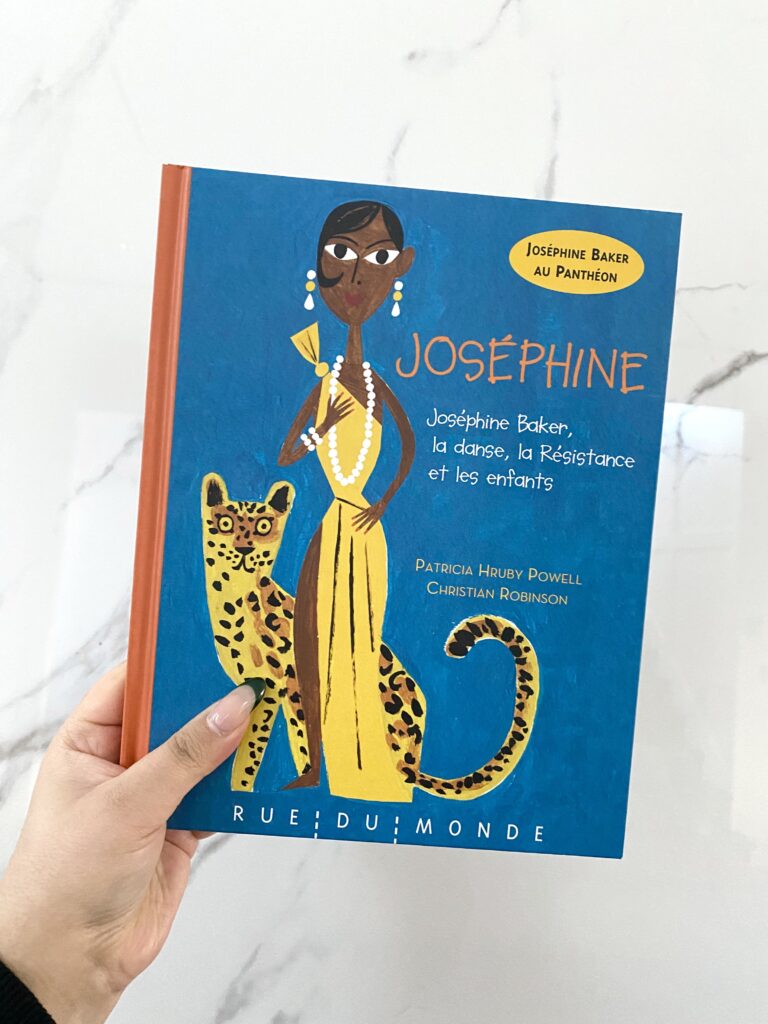
Le voyage de Cora par Natacha Hounsou, illustrations d’Anastasiya Rudyk
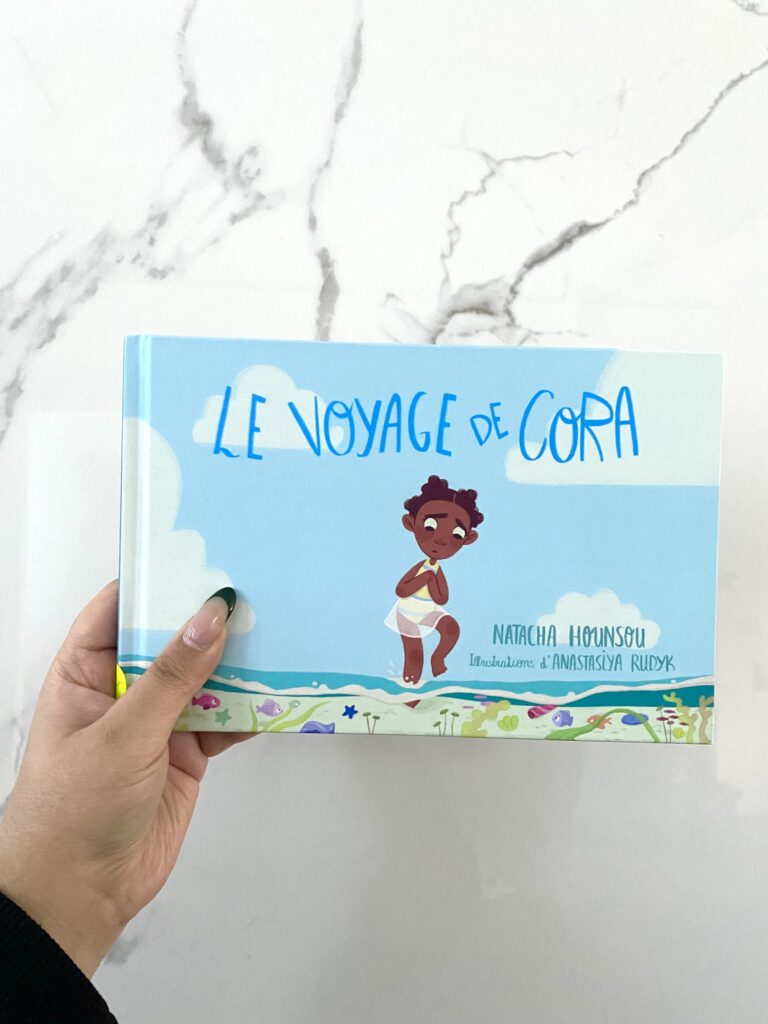
Finally, we’ve got Le voyage de Cora which is a book written by an Ontario French teacher! French teachers – go support your fellow French teacher!
This is a light read about Cora going on vacation to the sea for the very first time. In order to enjoy every part of her vacation, Cora must overcome her fear of the sea.
Themes: famille, vacances, mer, aventures, gentillesse
French level: high intermediate (a mix of tenses and tons of new thematic vocabulary)
About the book: A French original

